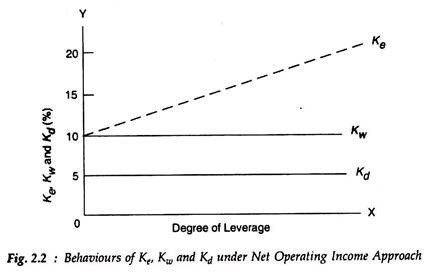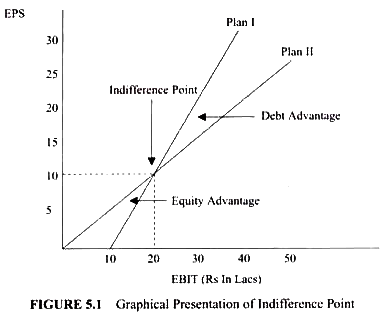Social Entrepreneurship
Social entrepreneurship is an approach by individuals, groups, start-up companies or entrepreneurs, in which they develop, fund and implement solutions to social, cultural, or environmental issues. This concept may be applied to a wide range of organizations, which vary in size, aims, and beliefs. For-profit entrepreneurs typically measure performance using business metrics like profit, revenues and increases in stock prices. Social entrepreneurs, however, are either non-profits, or they blend for-profit goals with generating a positive “return to society”. Therefore, they use different metrics. Social entrepreneurship typically attempts to further broad social, cultural, and environmental goals often associated with the voluntary sector in areas such as poverty alleviation, health care and community development.
At times, profit-making social enterprises may be established to support the social or cultural goals of the organization but not as an end in themselves. For example, an organization that aims to provide housing and employment to the homeless may operate a restaurant, both to raise money and to provide employment for the homeless.
In the 2010s social entrepreneurship was facilitated by the use of the Internet, particularly social networking and social media websites. These websites enable social entrepreneurs to reach numerous people who are not geographically close yet who share the same goals and encourage them to collaborate online, learn about the issues, disseminate information about the group’s events and activities, and raise funds through crowdfunding.
Modern definition
Grameen Bank founder and Nobel Peace Prize winner Muhammad Yunus (left) with two young social entrepreneurs (right)
The concept of Social Entrepreneurship emerged in the 1980s and since then has only been gaining more momentum. Despite this fact, after decades of efforts to find a common ground to define the concept, no consensus has been reached. The dynamicity of the object and the multiplicity of the conceptual lens used by researchers has made it impossible to capture it, in such a way that scholars have compared it with a mythological beast Scholars have different backgrounds, generating a great disparity of conceptualizations. These should be arranged in 5 clusters of meaning, according to the focus given and the conceptual framework assumed by the researcher. The first group of authors focuses on the person of the entrepreneur, being the mainstream definition. J. G. Dees argues that Social Entrepreneurship is the result and the creation of an especially creative and innovator leader.
Social entrepreneurs can include a range of career types and professional backgrounds, ranging from social work and community development to entrepreneurship and environmental science. For this reason, it is difficult to determine who is a social entrepreneur. David Bornstein has even used the term “social innovator” interchangeably with social entrepreneur, due to the creative, non-traditional strategies that many social entrepreneurs use. For a clearer definition of what social entrepreneurship entails, it is necessary to set the function of social entrepreneurship apart from other voluntary sector and charity-oriented activities and identify the boundaries within which social entrepreneurs operate.[8] Some scholars have advocated restricting the term to founders of organizations that primarily rely on earned income (meaning income earned directly from paying consumers), rather than income from donations or grants. Others have extended this to include contracted work for public authorities, while still others include grants and donations.
Social entrepreneurship in modern society offers an altruistic form of entrepreneurship that focuses on the benefits that society may reap. Simply put, entrepreneurship becomes a social endeavor when it transforms social capital in a way that affects society positively. It is viewed as advantageous because the success of social entrepreneurship depends on many factors related to social impact that traditional corporate businesses do not prioritize. Social entrepreneurs recognize immediate social problems, but also seek to understand the broader context of an issue that crosses disciplines, fields, and theories. Gaining a larger understanding of how an issue relates to society allows social entrepreneurs to develop innovative solutions and mobilize available resources to affect the greater global society. Unlike traditional corporate businesses, social entrepreneurship ventures focus on maximizing gains in social satisfaction, rather than maximizing profit gains. Both private and public agencies worldwide have had billion-dollar initiatives to empower deprived communities and individuals. Such support from organizations in society, such as government-aid agencies or private firms, may catalyze innovative ideas to reach a larger audience.
Prominent individuals associated with social entrepreneurship include Pakistani Akhter Hameed Khan and Bangladeshi Muhammad Yunus, a leader of social entrepreneurship in South Asia. Yunus was the founder of Grameen Bank, which pioneered the concept of microcredit for supporting innovators in multiple developing countries in Asia, Africa, and Latin America. He received a Nobel Peace Prize for his efforts. Others, such as former Indianapolis mayor Stephen Goldsmith addressed social efforts on a local level by using the private sector to provide city services.
Characteristics in Social Entrepreneurship
Bill Drayton founded Ashoka in 1980, an organization which supports local social entrepreneurs. Drayton tells his employees to look for four qualities: creativity, entrepreneurial quality, social impact of the idea, and ethical fiber. Creativity has two parts: goal-setting and problem-solving. Social entrepreneurs are creative enough to have a vision of what they want to happen and how to make that vision happen. In their book The Power of Unreasonable People John Elkington and Pamela Hartigan identify why social entrepreneurs are, as they put it, unreasonable. They argue that these men and women seek profit in social output where others would not expect profit. They also ignore evidence suggesting that their enterprises will fail and attempt to measure results which no one is equipped to measure. About this, the Schwab Foundation says that entrepreneurs have “A zeal to measure and monitor their impact. Entrepreneurs have high standards, particularly in relation to their own organization’s efforts and in response to the communities with which they engage. Data, both quantitative and qualitative, are their key tools, guiding continuous feedback and improvement.” Ashoka operates in multiple countries.
Entrepreneurial quality builds from creativity. Not only do entrepreneurs have an idea that they must implement, they know how to implement it and are realistic in the vision of implementing it. Drayton says that, “Entrepreneurs have in their heads the vision of how society will be different when their idea is at work, and they can’t stop until that idea is not only at work in one place, but is at work across the whole society.” This manifests through a clear idea of what they believe the future will look like and a drive to make this come true. Besides this, entrepreneurs are not happy with the status quo; they want healthy change. This changemaking process has been described as the creation of market disequilibria through the conversion of antagonistic assets into complementarities.
Social impact measures whether the idea itself will be able to cause change after the original founder is gone. If an idea has intrinsic worth, once implemented it will cause change even without the charismatic leadership of the first entrepreneur. One reason that these entrepreneurs are unreasonable is that they are unqualified for the task they take on. Most entrepreneurs have not studied the skills needed to implement their ideas. Instead, they bring a team of qualified people around themselves. It is the idea that draws this team.
Ethical fiber is important because leaders who are about to change the world must be trustworthy. Drayton described this to his employees by suggesting that they picture a situation that frightens them and then place the candidate in the situation with them. If they feel comfortable in this scenario, the entrepreneur has ethical fiber. One distinguishing attribute of entrepreneurs is that they rarely take credit for making change. They insist that the change they have brought about is due to everyone around them. They also tend to be driven by emotion; they are not trying primarily to make a profit but to address suffering. Muhammad Yunus says about this characteristic, “He (or she) competes in the marketplace with all other competitors but is inspired by a set of social objectives. This is the basic reason for being in the business.”
Challenges in Social Entrepreneurship
Because the world of social entrepreneurship is relatively new, there are many challenges facing those who delve into the field. First, social entrepreneurs are trying to predict, address, and creatively respond to future problems. Unlike most business entrepreneurs, who address current market deficiencies, social entrepreneurs tackle hypothetical, unseen or often less-researched issues, such as overpopulation, unsustainable energy sources, food shortages. Founding successful social businesses on merely potential solutions can be nearly impossible as investors are much less willing to support risky ventures.
The lack of eager investors leads to the second problem in social entrepreneurship: the pay gap. Elkington and Hartigan note that “the salary gap between commercial and social enterprises… remains the elephant in the room, curtailing the capacity of [social enterprises] to achieve long-term success and viability.” Social entrepreneurs and their employees are often given diminutive or non-existent salaries, especially at the onset of their ventures. Thus, their enterprises struggle to maintain qualified, committed employees. Though social entrepreneurs are tackling the world’s most pressing issues, they must also confront skepticism and stinginess from the very society they seek to serve.
Another reason social entrepreneurs are often unsuccessful is because they typically offer help to those least able to pay for it. Capitalism is founded upon the exchange of capital (most obviously, money) for goods and services. However, social entrepreneurs must find new business models that do not rely on standard exchange of capital in order to make their organizations sustainable. This self-sustainability is what distinguishes social businesses from charities, who rely almost entirely on donations and outside funding.





